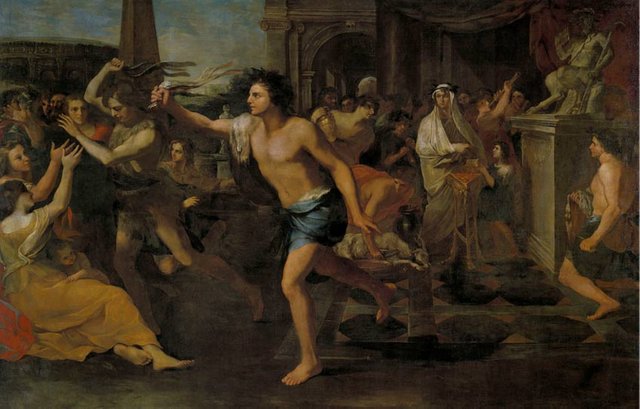St Valentine's day- A day shrouded with dark origin
Valentine's Day is a day earmarked to celebrate love, romance and affection. But the origins of this festival are actually dark, bloody — and a bit muddled with no proper account of how it came to being.
Though no one has been able to pinpoint the exact history of this day, but all account dates back to ancient Rome, where men hit on women by hitting them.

Romans – Wild and Crazy
Between Feb. 13 to 15 yearly, the Romans celebrated the feast of Lupercalia. The men sacrificed a goat and a dog, then whoop women with the hides and skin made from the animal they had freshly slain.
The Roman romantics "were drunk. They were naked," says Noel Lenski, a historian at the University of Colorado at Boulder. Young women would actually line up for the men to hit them, Lenski says. They believed this would make them fertile.
Afterwards a matchmaking game, in which young men drew the names of women from a jar. The couple would then be, coupled up for the duration of the festival — or longer, if the match was right.
The ancient Romans may also be responsible for the name of our modern day of love. Emperor Claudius II executed two men — both named Valentine — on Feb. 14 of different years in the 3rd century A.D. Their martyrdom was honored by the Catholic Church with the celebration of St. Valentine's Day.
In the 5th century Pope Gelasius combined St. Valentine's Day with Lupercalia to expel the pagan rituals. But the festival was more of a theatrical interpretation of what it had once been. Lenski adds, "It was a little more of a drunken revel, but the Christians put clothes back on it. That didn't stop it from being a day of fertility and love."
Around the same time, the Normans celebrated Galatin’s Day. Galatin meant "lover of women." That was likely confused with St. Valentine's Day at some point, in part because they sound alike.
Shakespeare and the Love story
As the years went on, the holiday grew sweeter. Chaucer and Shakespeare romanticized the holiday in their work, that made it gain popularity throughout Britain and the rest of Europe. Handmade paper cards became the tokens-du-jour in the Middle Ages.
Eventually, the tradition made its way to the New World. The industrial revolution ushered in factory-made cards in the 19th century. And in 1913, Hallmark Cards of Kansas City, Mo., began mass producing valentines. February has not been the same since.
Today, the holiday is big business: According to market research firm IBIS World, Valentine's Day sales reached $17.6 billion last year; this year's sales are expected to total $18.6 billion.
The celebration of Valentine's Day goes on, in varied ways. Many will break the bank buying jewelry and flowers for their beloveds. Others will celebrate in a SAD (that's Single Awareness Day) way, dining alone and binging on self-gifted chocolates. A few may even be spending this day the same way the early Romans did. But let's not go there.
How do you intend spending your valentine?
Your text is stolen with a high probability. I can find big chunks from everywhere everywhere on the internet;
Is your question about how we spend the day meant truthfully?
Hi! I am a robot. I just upvoted you! I found similar content that readers might be interested in:
https://www.npr.org/2011/02/14/133693152/the-dark-origins-of-valentines-day